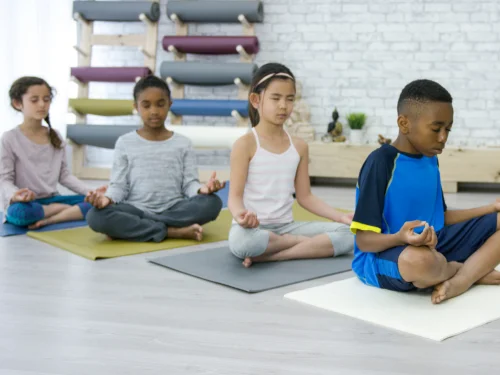How to Help Someone with Sensory Overload: 6 Practical Ways to Support Calm
Yes—finger plays, clapping games, and dance routines that use hand gestures all help. Combine rhythm and repetition for deeper learning.
Send home simple activity ideas, kits, or worksheets. Offer short instructions and encourage family involvement. Regular practice builds lasting progress.
Try origami, sticker scenes, stringing pasta, or painting with Q-tips. Crafts that use small pieces build precision and control.
Key Takeaways
- Sensory overload happens when the brain is overwhelmed by sensory input and can’t process it effectively.
- It can lead to fight, flight, or freeze responses—meltdowns, shutdowns, or escape behaviors.
- The best help in the moment is to reduce stimulation, provide space, and avoid unnecessary talking.
- Long-term support includes spotting early signs, knowing triggers, creating sensory-friendly environments, and building calming routines.
What Is Sensory Overload?

Sensory overload occurs when the brain receives more information than it can handle. Think of it like having too many apps open on your phone—everything slows down, freezes, or crashes.
For someone experiencing overload, the brain triggers a stress response. This usually shows up as:
- Fight (anger, lashing out)
- Flight (running away, hiding)
- Freeze (shutting down, going quiet)
Signs of Sensory Overload
.webp)
Signs vary by person but may include:
- Sudden changes in voice or tone
- Fidgeting, pacing, or going completely still
- Becoming flushed, pale, or sweaty
- Struggling to focus or seeming “checked out”
- Crying, shouting, or aggressive reactions
- Withdrawing, rocking, or appearing unresponsive
Common Triggers
.webp)
Overload can come from one strong stimulus—or several building up over time. Common triggers include:
- Noise: Crowds, alarms, overlapping conversations
- Visuals: Bright lights, flickering screens, cluttered spaces
- Smells: Strong perfumes or cleaning chemicals
- Touch: Itchy clothing, crowded environments, unexpected touch
- Taste: Strong or unusual flavors and textures
- Movement/Balance: Busy hallways, car rides, or sudden jostling
How to Help in the Moment
.webp)
When someone is overloaded, small supportive actions can make a big difference:
- Reduce demands immediately—pause or stop the task.
- Stop talking—avoid adding more input.
- Offer time and space—allow them to leave or find quiet.
- Find a calm setting—dim lights, reduce noise, minimize clutter.
- Use calming tools—weighted blankets, fidgets, headphones, deep breathing.
- Be patient—regulation often takes longer than expected.
Long-Term Strategies
Helping prevent overload is just as important as managing it in the moment. Strategies include:
- Know and track triggers
- Watch for early warning signs
- Plan calming breaks between overstimulating activities
- Encourage coping skills like movement, yoga, or breathing exercises
- Create sensory-friendly spaces at home, school, or work
- Stick to routines to reduce unpredictability
You May Also Like: 15 Mindfulness Activities for Kids: Simple Ways to Build Calm, Focus, and Emotional Strength
Supporting Kids vs. Adults
- Children often express overload through behavior since they may lack words to describe what’s happening. Support means patience, observation, and teaching calming strategies.
- Adults may appear more in control but still need understanding, sensory-friendly tools (like sunglasses or earplugs), and supportive environments.
You May Also Like: How to Tell If You Have Astigmatism: 5 Key Symptoms and Diagnostic Tips
Conclusion
.webp)
Supporting someone through sensory overload is about empathy and action: reduce sensory input, provide safety, and respect their needs. With awareness and planning, you can help them regain calm and prevent future overwhelm.
You May Also Like: 15 Impulse Control Activities for Kids: Fun Ways to Build Self-Regulation




